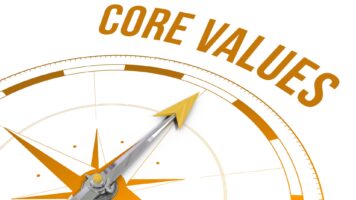3 Ways To Harness The Power Of Differences

Personal Development
December 10, 2014
Jane Perdue
Executive Director, The Jane Group
Topics
differences, diversity, inclusionBeing together again after so many years was pure delight. The connection took up as if we were finishing a conversation begun only the day before.
Familiarity is so comforting. Until...there’s too much of it, and its dark side surfaces: lack of innovation, narrow-minded thinking, ingrained and unquestioned bias, outdated practices, and failure to grow as a person. Boredom, too.
So what’s the antidote to comfort zones with self-imposed boundaries that have become inflexible? Training our brains and hearts to accept and appreciate differences.
An increasingly connected world multiplies our contacts with others—some who share our beliefs as well as those who do not. Interacting with people who agree with us and who share similar interests is usually a pleasant experience. Those contacts can become more challenging when they happen with people who see the world differently than we do.
A multitude of contributing factors that prompt different points of view exists: age, race, gender, ethnicity, religion, socio-economic and marital status, upbringing, disability, appearance, education, and lifestyle.
Other elements come into play as well in shaping how we approach situations and people, things as simple as what sports teams we root for or which political party we support.
If ignored or met with intolerance or indifference, these dissimilarities can be divisive, even lethal for career or business success. Blockbuster, Eastman Kodak, and Borders are but a handful of companies where process became habit and values became dogma, resulting in those companies becoming history. Professor Donald Sull calls it active inertia, an organization’s tendency to follow established patterns of behavior.
People do the same thing. I once had a boss who had an imaginary grid on his desktop—financials had a certain resting spot as did staff reports and marketing news. He wore a straw fedora in the summer and a wool one in the winter. He abhorred dissent, uncertainty, and pens with red ink.
Mimicking his decision-making and thinking styles assured lovely raises. Alternate points of view, not so much. His department output was reliable but unremarkable. A classic case of active inertia.
There’s three things you can do to begin appreciating differences:
- Decide to be open-minded and not automatically reject the unfamiliar.
- Challenge yourself to actively seek out new experiences and people.
- Embrace the purposeful discomfort that accompanies gaining new experiences, insights, knowledge, and maybe a friend or two.
All great experiences that engage us have an element of uncertainty at their core.~ Aaron Dignan
If acknowledged and taken into consideration, differences make us better. Diversity of thought, opinion, and perspective yields richer and more productive outcomes. Plus it fuels creativity, innovation, and deeper thinking—the ideal solution to unyielding and stifling comfort zones that hold us back from our potential.





Jane, I really enjoyed this post. Yesterday, I read another “differences” post ( http://spinsucks.com/marketing/unique-value-proposition/ ) and with both I felt the same thing — it’s easy to give lip service to appreciating differences and hard to practice that! I appreciate your ideas!
Hi, Jane
Catching up on my reading and I love this post:)
The phrase “active inertia” caught my attention as a great way to describe what I have experienced in some organizations. Working hard, just to stay in the same place …
This is not a new or unique message, but you have nicely stated it in a way that bears sharing. This is a great contribution to our ongoing discussion of leadership skills and the importance of recognizing and embracing our differences.
John
Hi, John —
My turn for catching up! Belated thanks for your kind words. Managing differences is a topic that bears repeating!
Jane